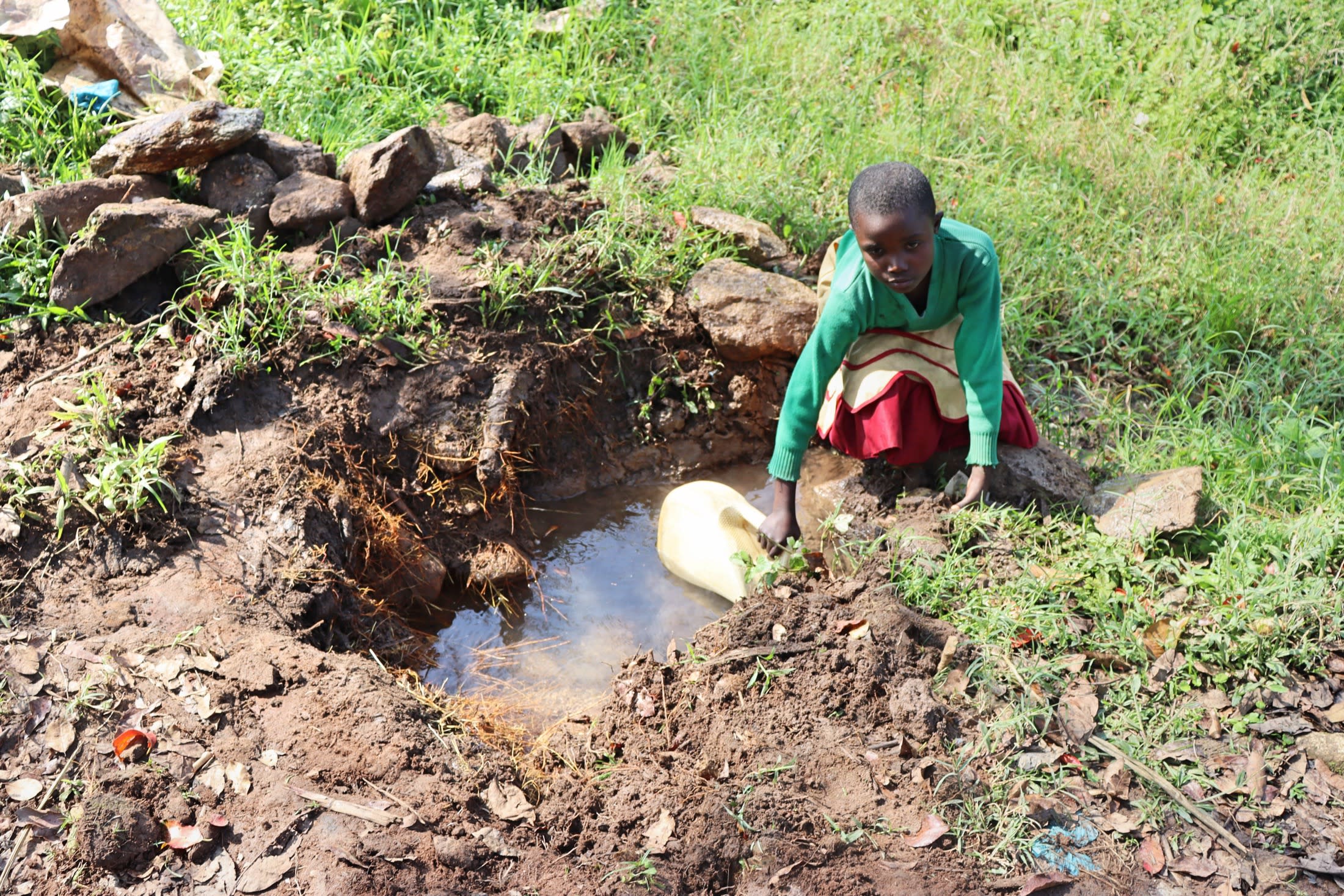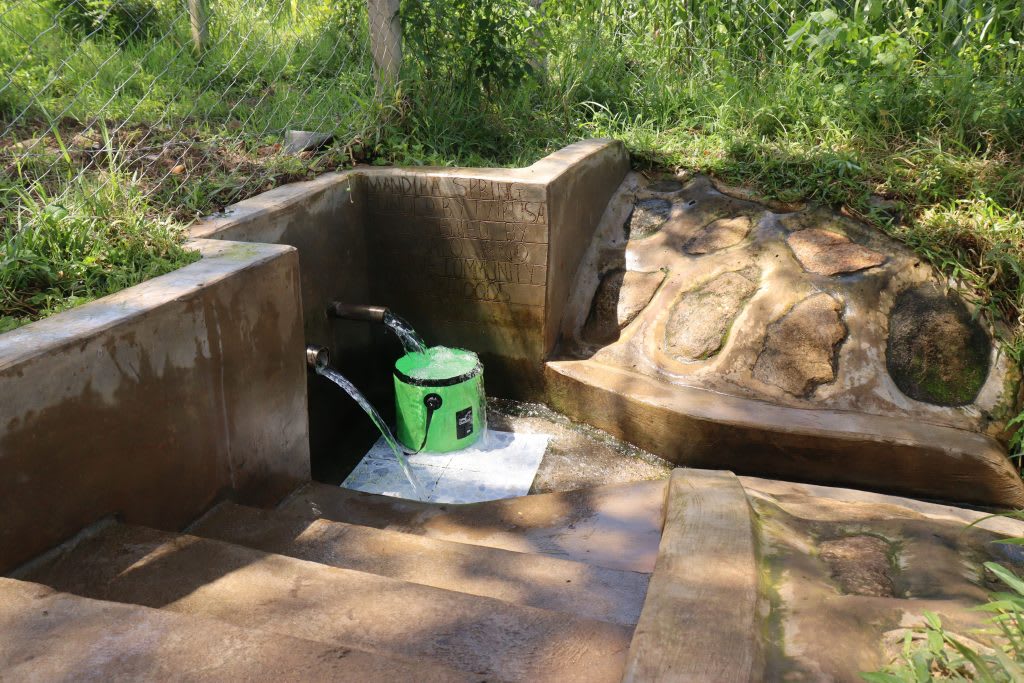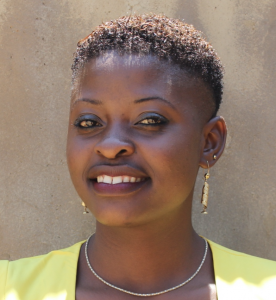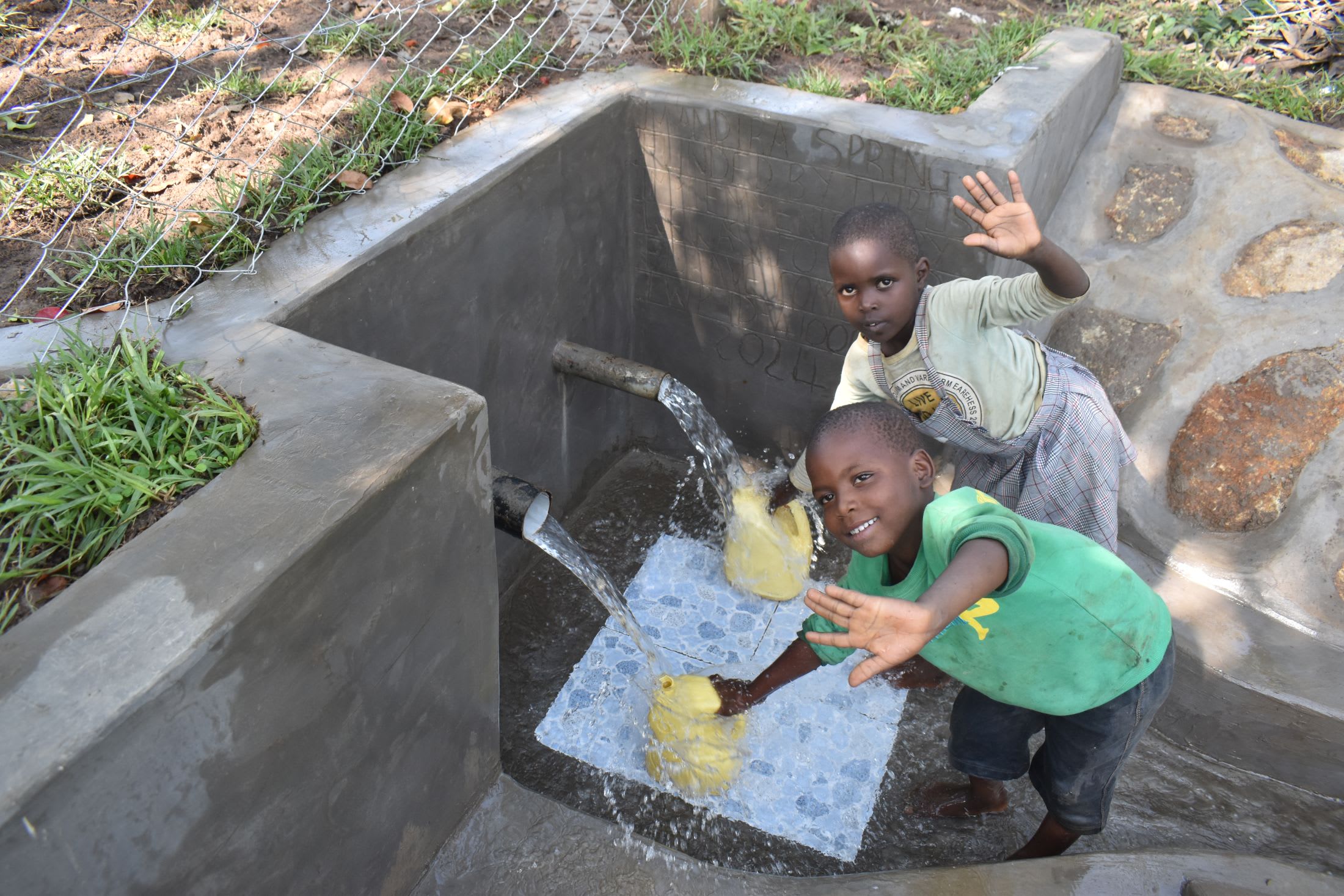The Furave Community, with a population of 210, faces difficulty accessing an adequate water supply to meet their daily needs. Their primary source is a small, unprotected spring in a swampy area that becomes especially hazardous and slippery during the rainy season. As a result, children cannot be sent alone for fear of injuries.

"The difficult part of getting water from this water point is access. I need to have someone who can help me get water, and this is so hectic. The moment there is no one to help fetch water, it means I, with my grandmother, will not have water," shared 11-year-old Rosaline N., shown below.

55-year-old Farmer Phillip Amondo (shown below) shared how the water crisis has affected him. "Most of the time, I spent my time [on] the farm because this is my main source of income. I also have cattle and get water for them very early in the morning. This implies that I get water first before I embark on my farm. When at the water point and find the water dirty [I] am forced to wait, and this delays my farm work. I cannot send even my grandchildren because the environment is swampy and not safe."

Accessibility isn't the only challenge.
Because this spring is unprotected, it is open to contaminants. There are reports of frequent water-related illnesses.
"The most reported health consequences are typhoid and stomach pains. This causes many children to be absent from school and calls for medication," says field officer Jemmimah Khasoha.
"When one parent is unhealthy, the children can not be taken [care of] well. The children fail to go to school, [making] their performance in school poor. The parents also spend money on medication which could be used for other developmental works," she continued.

The protection of the spring will enable people like Rosaline to have unfettered access to water. She will no longer have to go without water because she can access the spring safely. Phillip won't waste time waiting to fetch water to improve his farm. The whole community will be able to collect water without fear, children will have better attendance in school, and family resources can be prioritized for the future.
The Proposed Solution, Determined Together...
At The Water Project, everyone has a part in conversations and solutions. We operate in transparency, believing it benefits everyone. We expect reliability from one another as well as our water solutions. Everyone involved makes this possible through hard work and dedication.
In a joint discovery process, community members determine their most advantageous water solution alongside our technical experts. Read more specifics about this solution on the What We're Building tab of this project page. Then, community members lend their support by collecting needed construction materials (sometimes for months ahead of time!), providing labor alongside our artisans, sheltering and feeding the builders, and supplying additional resources.
Water Access for Everyone
This water project is one piece in a large puzzle. In Kenya, Sierra Leone, and Uganda, we're working toward complete coverage of reliable, maintained water sources that guarantee public access now and in the future within a 30-minute round trip for each community, household, school, and health center. One day, we hope to report that this has been achieved!
Training on Health, Hygiene & More
With the community's input, we've identified topics where training will increase positive health outcomes at personal, household, and community levels. We'll coordinate with them to find the best training date. Some examples of what we train communities on are:
- Improved hygiene, health, and sanitation habits
- Safe water handling, storage & treatment
- Disease prevention and proper handwashing
- Income-generation
- Community leadership, governance, & election of a water committee
- Operation and maintenance of the water point
Chlorine Dispensers
Installing chlorine dispensers is an important piece of our spring protection projects. Protecting a spring provides community members with an improved water source, but it doesn’t prevent contamination once the water is collected and stored. For example, if the water is clean and the container is dirty, the water will become contaminated.
We ensure that each chlorine dispenser is filled with diluted chlorine on a consistent schedule so that people can add pre-measured drops to each container of water they collect. That way, community members can feel even more confident in the quality of their water.





 Protected Spring
Protected Spring
 Rehabilitation Project
Rehabilitation Project





































